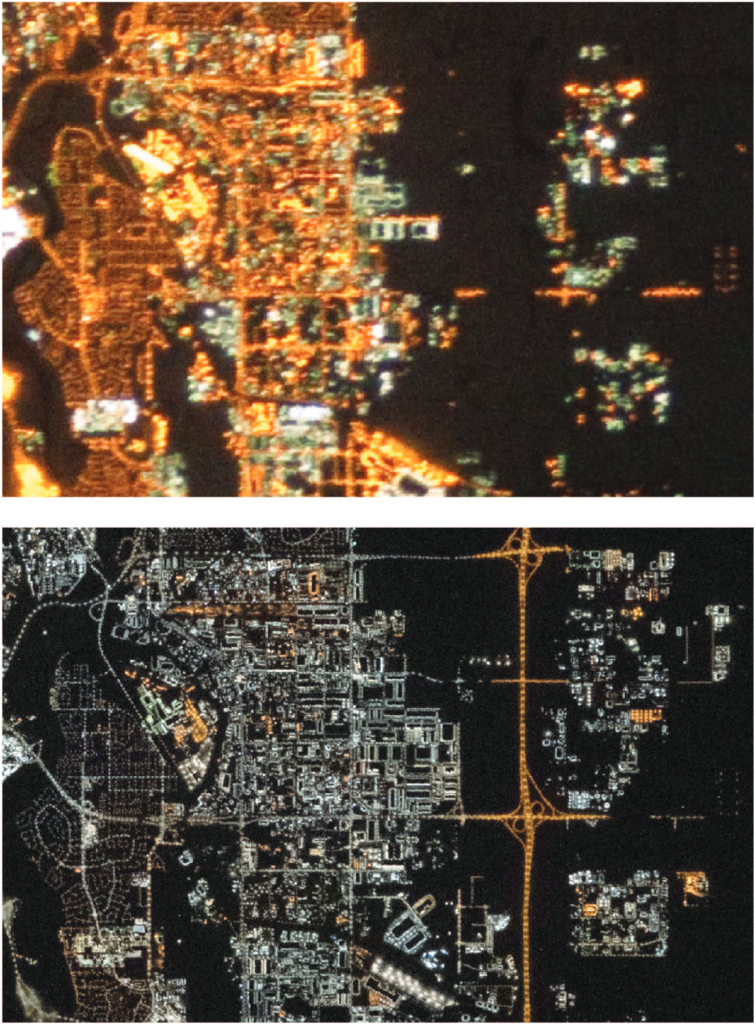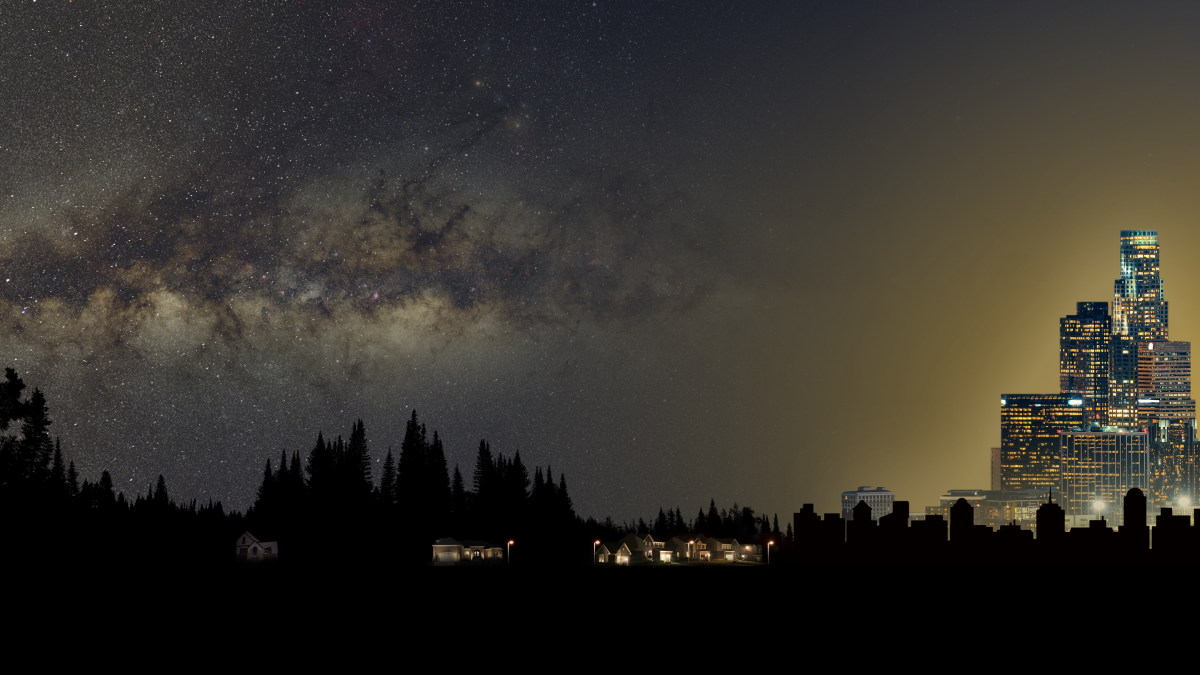The Sun goes down. The stars come out. And so do the artificial lights. That’s a huge problem for scientists and ecosystems and stargazers that depend on a dark nighttime sky.
A new study evaluated how sky glow, the light that suffuses the night sky after sundown, has worsened over the past decade. Using more than 51,000 naked-eye observations from stargazers around the world, the team revealed that the sky has brightened by an average of 9.6% per year, blinking out stars faster than anticipated from satellite measurements.
“Once you switch to LED lights, we see [cities] get darker in the satellite data. But when we look on large scales, most places are still getting brighter at night,” said lead researcher Christopher Kyba, a scientist at GFZ Helmholtz Centre Potsdam in Germany who studies light pollution and sustainable lighting solutions.
Brighter and Brighter
Sky glow happens when artificial light scatters through the atmosphere and off of clouds at night, the same way that scattered light from the Sun makes the daytime sky blue and the dawn and dusk skies red. That nighttime illumination masks starlight. In recent decades, cities have expanded and installed new light fixtures, most of which use bright white light-emitting diodes (LEDs), which scatter light farther than older yellow-orange incandescent bulbs.

The switch has made measuring sky glow with satellites particularly challenging. Onboard technology that measures surface brightness dates back to the Cold War, before the advent of LEDs. Modern satellites were designed with similar technology to maintain continuity in the data.
Because that technology was calibrated to measure light emitted by older-style yellow-orange bulbs, it’s not very sensitive to the bluer light emitted by modern LEDs. Those sky glow measurements can therefore be inaccurate, explained Christian Luginbuhl, president of the Flagstaff Dark Skies Coalition in Arizona. LEDs emit more blue light than older bulbs do. Too, satellites look downward, measuring light reflected off the ground. A more accurate picture of sky glow’s effects at Earth’s surface comes from looking upward at the light scattering from molecules and aerosols, he said.
So Kyba and his colleagues turned to crowdsourced science to help them better measure changes in sky glow. With the Globe at Night project from the National Optical-Infrared Astronomy Research Laboratory (NOIRLab), people from 180 countries recorded how many stars they can see at night from their own backyards. From the 17-year database, the researchers mined more than 51,000 observations from 2011 to 2022, combining those from comparable locations, such as the centers of large cities or rural areas, to determine how night sky visibility has changed.
A child born under a sky with 250 visible stars would be able to see only 100 of those stars on their eighteenth birthday.
The researchers found that the decrease in visible stars is equivalent to the night sky brightening by an average of 9.6% annually during that period. At that rate, a child born under a sky with 250 visible stars would be able to see only 100 of those stars on their eighteenth birthday, according to the team. The researchers published their results in Science in January.
The increase in sky glow recorded by naked-eye observers around the world is roughly 6 times more than that measured by satellites. The discrepancy is partially due to the fact that most Globe at Night observations are recorded in residential areas, where development happens faster than under the darkest of rural skies.
“This study underscores and amplifies the alarm raised by light pollution researchers around the world in the last 10 years: Light pollution is increasing nearly everywhere, by substantial amounts,” said Luginbuhl, who was not involved in the research. The work is “particularly important because of its reliance on human visual observations, which give a more accurate assessment of the impact to humans than the more commonly used satellite measurements.”
Impacts of Light Pollution
This research was “highly credible as a measure of decreasing visibility of the dark night sky,” said Richard Green, an astronomer at University of Arizona’s Steward Observatory in Tucson who was not involved with the research. “The rate of decrease is truly alarming. It is likely indicative of increasing disruption of natural processes, not to mention wasted energy.”

Nearly half of species are nocturnal. The increasing loss of dark, starry nights has put many species at risk, including insects, sea turtles, and birds. “It’s hard to overstate how big of an environmental change this is,” Kyba said. “Life evolved for hundreds of millions of years under fairly constant conditions of a bright day and a relatively dark night.…Now, in a 100-year period, the natural signals of daytime and nighttime are gone over huge stretches of North America, Europe, and parts of Asia.”
“Such changes do not involve removing lights that are needed but, rather, using the right amount of light, in the right place, and at the right time.”
Some regions, especially those near observatories or with endangered species, enforce ordinances to reduce light pollution, but individuals and communities also can make simple, low-tech changes to reduce sky glow and save on energy costs, Green said. “Such changes do not involve removing lights that are needed but, rather, using the right amount of light, in the right place, and at the right time.” Shield lights so they shine downward, use yellow lights instead of white ones, and have lights on timers or motion sensors to shine only when needed, he suggested. With these changes, said Green, “sky brightness reductions of 90% are realistic.”
—Kimberly M. S. Cartier (@AstroKimCartier), Staff Writer

